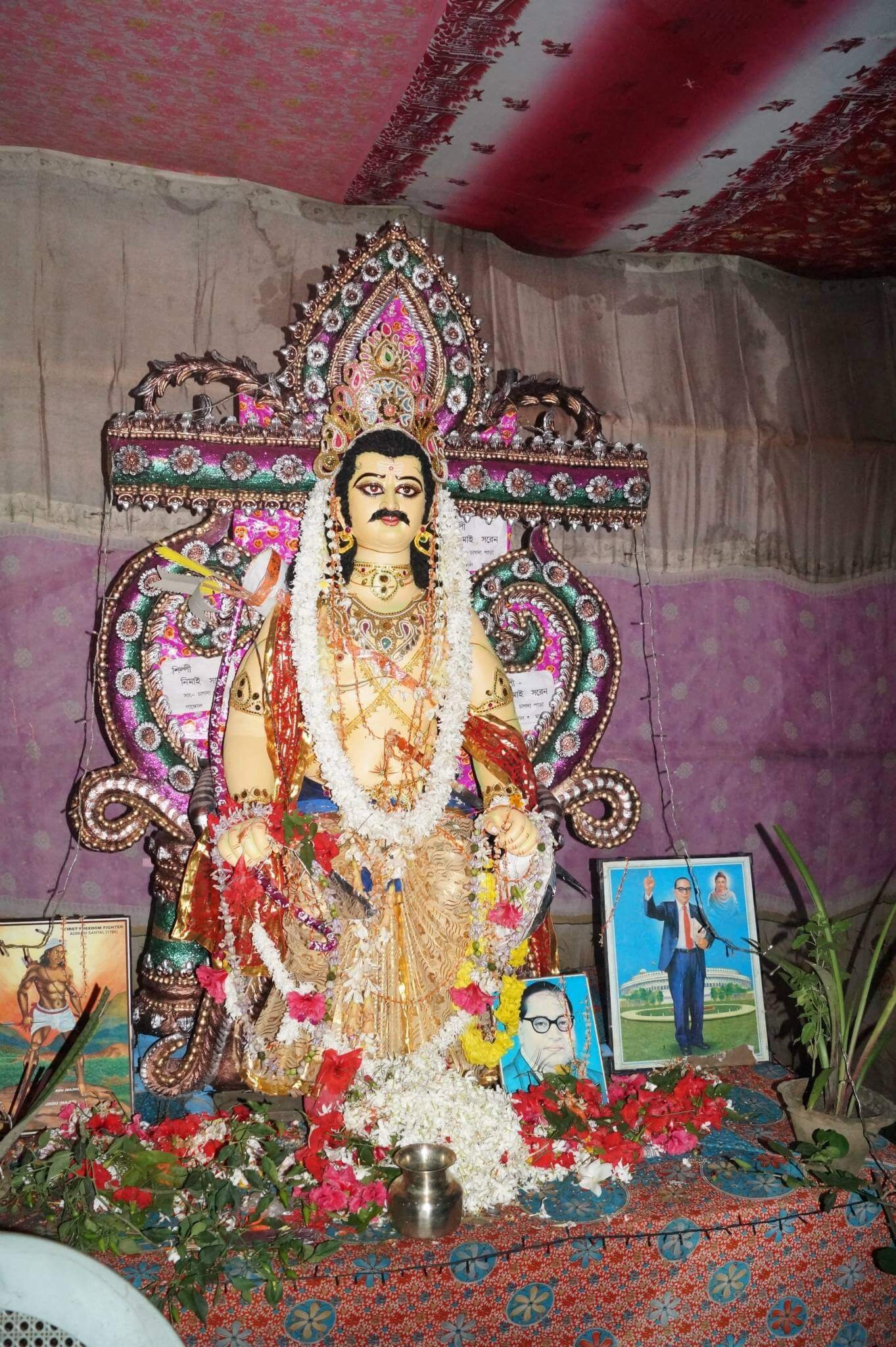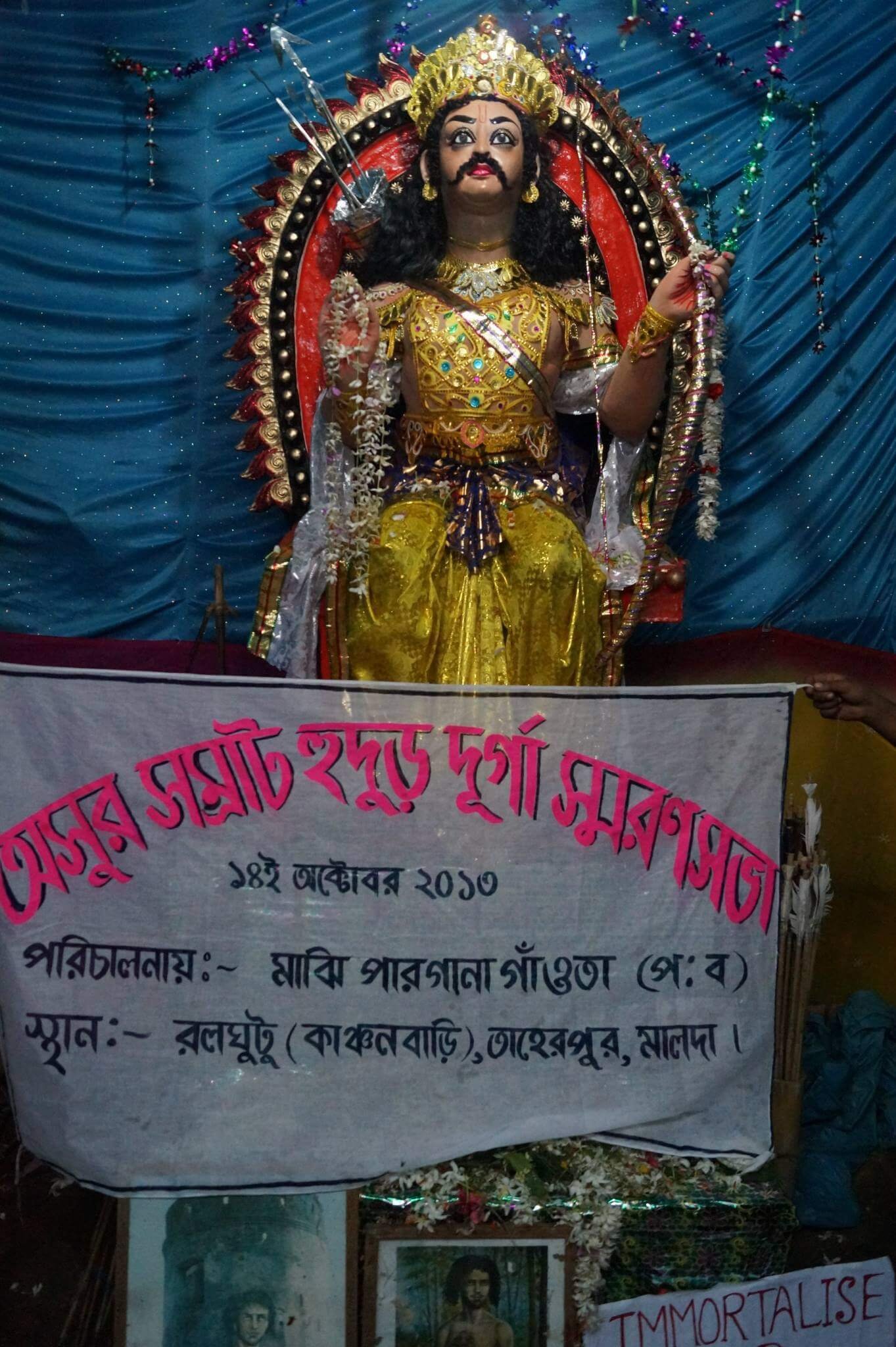It’s that time of the year again. For five days, Kolkata will be transformed to a parallel universe where people don’t sleep or tire, they just take to the streets of the city fuelled by a desire to capture the “puja spirit”. And what is this puja spirit? Ask any Bengali and he or she will tell you that Durga Puja in Bengal is much more than a religious festival. It’s a cultural festival.
But whose culture are we celebrating?
In February this year, in her spirited speech defending the government’s stance on controversies in Hyderabad Central University and Jawaharlal Nehru University, referred to a little-known festival of eastern India, celebrated during the same time as Durga Puja, Mahishasura Martyrdom Day. It’s observed by about 26000 members of the Asur tribe who identify themselves as the descendants of Mahishasura, the demon that Hindu mother-goddess Durga killed.
Smriti Irani referred to the Mahishasura Martyrdom Day and asked-“Who wants to have this discussion in the streets of Kolkata? I want to know.”
Indeed, conventional wisdom might tell you that this is not the ideal time to discuss Mahishasura’s martyrdom in Kolkata. But activists from the Asur community believe otherwise. “We need to tell people about our history. We need to tell them the other side of the story,”says Bargi Asur, a leader of the Asur community from Jalpaiguri.

A few days ago Calcutta edition of a national daily carried a news item describing the theme of their pandal. The organisers boasted how not one clay Asura but nine “live Asurs”(people who identify as the descendants of Mahisasur) as well, will be present at a Durga Puja pandal in the city, as part of the organisers’ attempt to ‘familiarise Calcuttans with them and their history’.
They also claimed that, in the eternal battle between good and evil, even the evil of Mahishasur gets forgiven by the goddess, and continual marginalisation and exclusion of Mahishasur’s descendants from ‘our cultural mainstream’ must also be resisted.
Sushma Asur, activist and archivist at Asur Wisdom Collective, who was invited to the inauguration of this puja claims that she had been duped into accepting the invitation, as it had not been mentioned that they would be part of festivities around a Durga Puja. “This duping is yet another instance of the historical whitewashing of Asur cultures, rituals and beliefs that have been going on for far too long,”says Sushma Asur.
Who are Asurs?
Which brings us to the obvious question. Who are the Asurs, and why suddenly this hue and cry over them? According to a recent news report their are about 26,000 people belonging to the Asur tribe in Bengal and Jharkhand.
The Asurs however claim that Mahishasura was an aboriginal king, a great ruler of his people, who had been duped and murdered in ancient times, by Aryans usurpers. Hence, the period that majoritarian Hindu society celebrates as the period of worship for Durga, is a time of mourning for them, remembering the greatness of their former king and his sad demise.
They also claim that historically the descendants of the Aryans have been taught to undermine the non-Aryan Asur and other aboriginals’ claims to history, myths, have treated them as unequal, barbaric and unclean. For close to a decade now, in different parts of India, divergent voices and people have been questioning the violent histories that Hindu myths and rituals have hidden away under their metanarratives, and challenged the mainstream discourses surrounding festivals such as Holi, Diwali, Durga Puja and Navaratri.
What is the Asur festivals all about?
Starting in the districts of Malda and Purulia, and now spread across several other districts of Bengal, the Mahishasura/ Hudur-Durga memorial meetings draw on Santhali folklores that talk of great king Hudur Durga who was murdered by a beautiful woman, at the behest of the Aryan god, Indra. These folktales also mention how traditionally Santhal men would not venture out during the Durga Puja celebrations and would later commemorate their martyr.

We visited Malda to document the Asur festival organised by Majhir Pargana Gaonta. Members of the Gaonta claimed that remembering Asur king Hudur Durga and spreading his message far and wide is an essential step in expressing their identities and cultures as the autochthons of India, their way of interrogating hegemonic, Brahminical assumptions and practices, and articulating the historical betrayal, both from representational practices and from access to resources that these communities suffer from.
It is reported that this year, 700 Asur memorial meetings are being held across West Bengal this, from a measly 20 in 2013. Culminating on the day the Asur king was martyred, the memorial events host statues of Hudur Durga, as well as speeches, songs condemning the historical injustice done to these communities, traditional dances and crafts are usually displayed at the venue, and large numbers of people travel great distances to both pay tribute to this great king, and protest their omission from mainstream histories and myths.

















